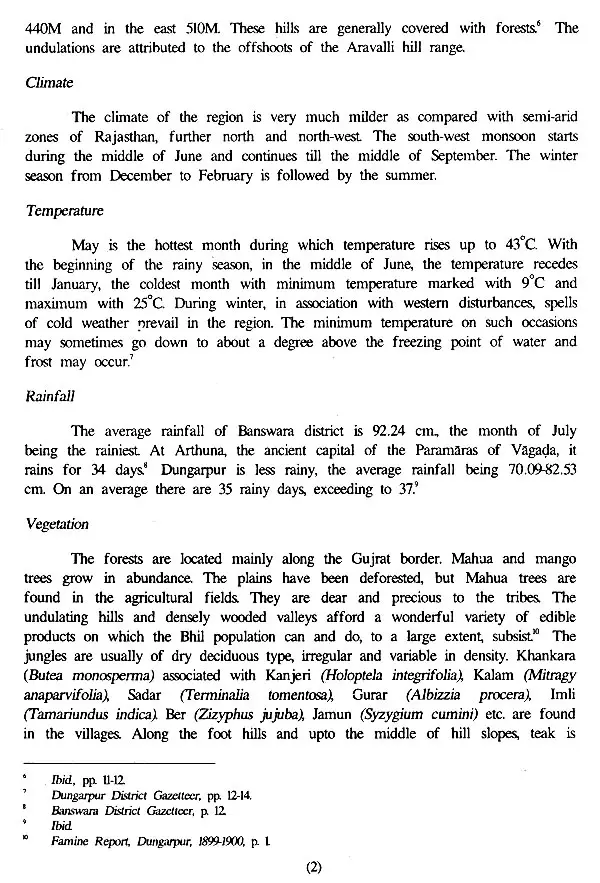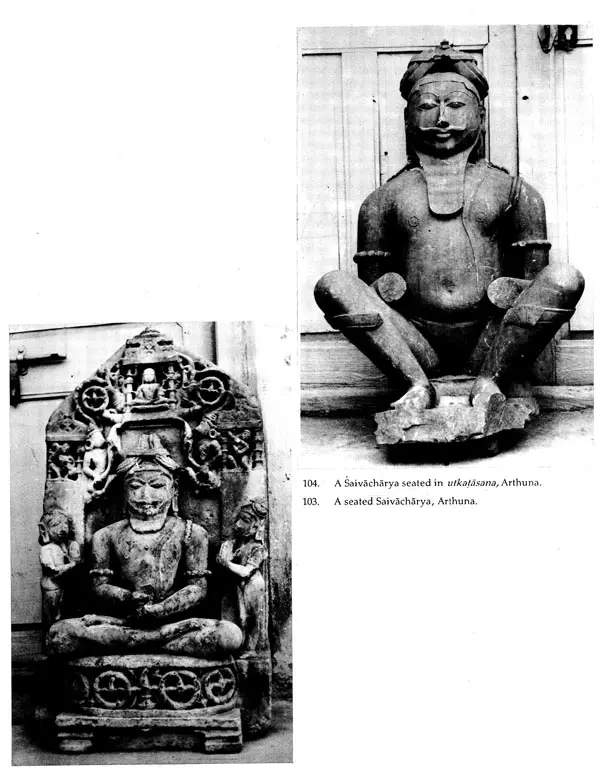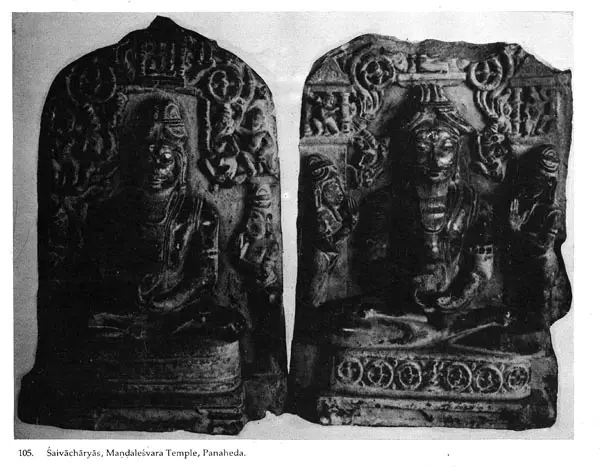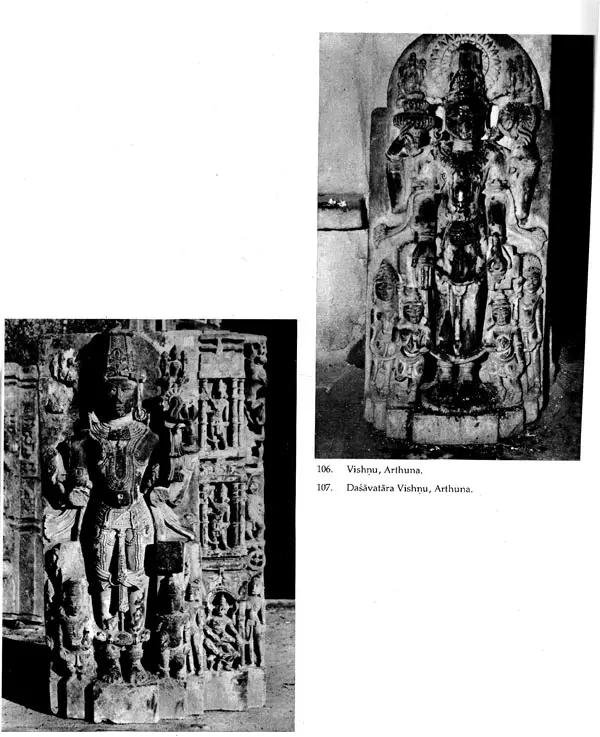
Art Traditions of The Paramaras of Vagada
Book Specification
| Item Code: | UAD389 |
| Author: | P. K. Trivedi |
| Publisher: | Publication Scheme Jaipur |
| Language: | English |
| Edition: | 1995 |
| ISBN: | 8185263965 |
| Pages: | 364 (Throughout B/W Illustrations with Map) |
| Cover: | HARDCOVER |
| Other Details | 11.00 X 9.00 inch |
| Weight | 1.37 kg |
Book Description
Vagada country in southeastern Rajasthan includes the present districts of Banswara and Dungarpur. The Parmaras of Vagada branch ruled here with its capital at Arthuna, between circa ninth to twelfth century.
Art traditions of the Paramaras of Vagada developed as a geographical variation of the main art trends of Western India. For its distinct location at the tri-junction of Malwa, Gujarat and Medapatta it did receive momentum from the ad joining cultural packets. Although area less inhabited with poor economy, it enjoyed some moments of glory and splendour as exemplified by the cult edifices, imagery, inscriptions and secular architecture existing at Panaheda, Arthuna, Baroda, Talawara, Chitari and Galiakot.
Maintaining with his professional objectivity, the author has sincerely tried to fill up a long desideratum and brought to light interesting data based on his field work.
P.K. Trivedi joined the Archaeological Survey of India in 1976. He has been actively associated with excavations at Kayavarchana, Anhilwad Paw, Sidhpur, Aguncha and Hulas. Under the National Project 'Archaeology of Ramayana sites' jointly directed by Prof. BB. Lal and Dr. KN. Dikshit, Shri Trivedi also assisted in the excavations at Sringaverapura and Bharadhvaja Asrama. Development and preservation of Cultural Heritage and Western Indian Art are his other interests. He has contributed many research papers in leading journals and delivered lectures also.
At present, he is the Superintending Archaeologist, Archaeological Survey of India, Temple Survey Project (Northern Region), Bhopal.
In comparison to the Imperial Paramaras of Dhara, who played an important role in the political and cultural history of medieval India as rivals of their contemporary powers, like the Chandellas, Kalachuris, Solankis and Chalukyas, the collateral Paramara families ruling from the peripheral centres of Chandravatt, Bhinmal and Vagada, appear to be pygmies. But when we take account of the rich epigraphical documents of the Paramaras of Vagada, the peace and prosperity that was offered by a succession of seven rulers of the family to the land of Vagada (western part of Malwa bordering on Gujarat), the active patronage that they provided to arts and letters, and above all the wealth of monuments they bequeathed to posterity, their achievements can by no means be rated as inconsequential.
The present book by Dr. P.K. Trivedi furnishes a comprehensive account of the political, social and religious history of the Vagada branch of the Paramaras, highlighting their contribution to the sculptural art and architecture of medieval India. With the recent publication of the Inscriptions of the main as well as the Vagada branch of the Paramaras in a standard volume of the Corpus Inscriptionum Indicarum by Dr. H.V. Trivedi the task of all researchers including Dr. P.K. Trivedi has been made easier. The present author has taken full advantage of the authoritative epigraphical readings and by his critical interpretation of the epigraphs has resolved many controversial points of the dynastic history.
The Vagada Paramaras built or sponsored a large number of temples of which nearly two dozen have survived and their remains still stand mostly at their capital-town of Arthuna and a few also at sites like Baroda, Panaheda and Talwara. As the rulers were followers of Saivism which was the prevailing faith of the age, most of these are Saiva temples but a few are dedicated to other deities like Hanuman, Surya, Lakshmi-Narayana and the sixty four Yoginis. The religious outlook of the rulers was quite catholic which accounts for some of their official dignitaries as well as Jaina merchants founding temples dedicated to Adinatha and Parsvanatha Jinas. Among the larger and highly ornate monuments notable are the Mandalesvara (A.D. 1080) and the Nilakantha Mahadeva (11th cent) temples, besides, the Jaina Temple (AD. 1195), all at Arthuna. The Mandalesvara Temple at Panaheda has the rare distinction of being the earliest dated (AD. 1059) temple with Bhumija sikhara in India, similar in design to the celebrated Udayesvara Temple built by the Imperial Paramara king Udayaditya, but with brick-built superstructure in indifferent preservation. The Hanuman Gadhi at Arthuna is noted for sitting a very large group of shrines, dating from the early 12th century.
The book specialises in describing the architectural features in full details of all the relevant temples in terminology drawn from ancient Silpa texts. The sculptures, both religious and secular, adorning each temple, have also been studied in meticulous detail and attention drawn to their distinctive stylistic and aesthetic traits. The correct identification of the numerous Surasundaris embellishing the temples forms a remarkable feature of the book.
The author and the publishers are both to be congratulated on the publication of such a well-integrated and comprehensive study of the art and architecture of the Paramaras of Vagada in the broader perspective of medieval India.
The imperial Paramaras played a dominant role in the political and cultural scene of central India This imperial dynasty ruled with its capital at Dhara The boundaries of the kingdom were marked by Vidisha in the east, Ratlam and Indore in the west and some parts of Hoshangabad in the south-east Its minor branches occupied the seats at Chandravati, Bhinmal, Kiradu and Arthuna, lying within the present boundaries of Rajasthan.
The monuments built under the imperial lineage at different cultural centres in Madhya Pradesh have been studied partly by Shri Krishna Deva, Mrs. E Zannas, Prof. K.D. Bajpai, Dr. Michael Meister, Shri M.N. Deshpande, Shri B.M. Pande, Dr. H.V. Trivedi and a few others. Prof. R.N. Mehta and Shri RC. Agrawala have studied the remains of Chandravati and published a monograph on behalf of the M.S. University, Baroda Unfortunately, ancient temples at Chandravati and Bhinmal are not adequately preserved which could be studied in detail About three decades ago Prof. M.A. Dhaky made a critical study of the Paramara temples at Kiradu in the Banner district of Rajasthan. Dr. RK Sharma had also edited an excellent work entitled Art of the Paramaras of Malwa. But save for the papers of Shri RC Agawala and Dr. B. N. Sharma, the study is mainly confined to the architecture, art, coins and epigraphs of the imperial rulers of Malwa. Dr. Gauri Shankar Hirachand Ojha has also mentioned some aspects of the Paramara centres in his ' History of Rajputana' . Perhaps owing to the neglected condition, their vestiges in the form of temples, aquatic structures, fortifications and rich sculptural wealth of the Paramaras of Vagada branch could not fascinate the scholars to study in detail.
In the present monograph which was originally submitted for Ph.D. Degree to the Bhopal University an attempt has been made to fill up this desideratum. For a long time the archaeological remains at Arthuna were buried or were in a dilapidated condition. After 1950 they were exposed and restored by the Archaeological Survey of India. It was found that the edifices at Arthuna, the capital seat of this branch, had undergone several alterations and additions at least upto fifteenth century. The key centres, identified for this study are Baroda, Panaheda, Arthuna, Talawara, Galiakot and Chitari. Here an endeavour has been made for the first time to conduct a comprehensive and analytical study of temples, sculptures and memorial stones etc. The data pertaining to sculptures is fresh. A few published icons have been reassessed. Many sculptures betray a later date. For this some images bearing dated donatory records were found to be very useful. For dating the temples, the earliest extant components have been taken as a datum line. The study has been made by examining the far off sites in the secluded areas by a spot-study and detailed documentation.
The present work was done under the guidance of my eminent Guru Prof. K.D. Bajpai but alas he is no more to see it duly published Inspite of his busy schedule, he always found time for me. I once again record my gratitude to him for this favour.
Shri Siya Sharan Natani, Director Publication Scheme, Jaipur has always been bearing with me happily and preferred to publish this book. M/S A. Computers have composed the script I am grateful to Dr. Chandramani Singh, Director, Jawahar Kala Kendra, Jaipur for going through the press copy. But it was Dr. B. N. Misra, Bhopal, who has made it thoroughly intelligible and presentable, inspite of his prolonged illness. I record herewith my deep gratitude to him. Shri Krishna Deva, former Director, Archaeological Survey of India, New Delhi and the founder of the Temple Survey Project (Northern Region), Bhopal has always been affectionate to me and has very kindly written the foreword to this book. I am deeply obliged to him for this act of patronage and encouragement. The monograph has been suffixed with a glossary which is based on terminology used by Shri Krishna Deva and Prof. M.A. Dhaky.














